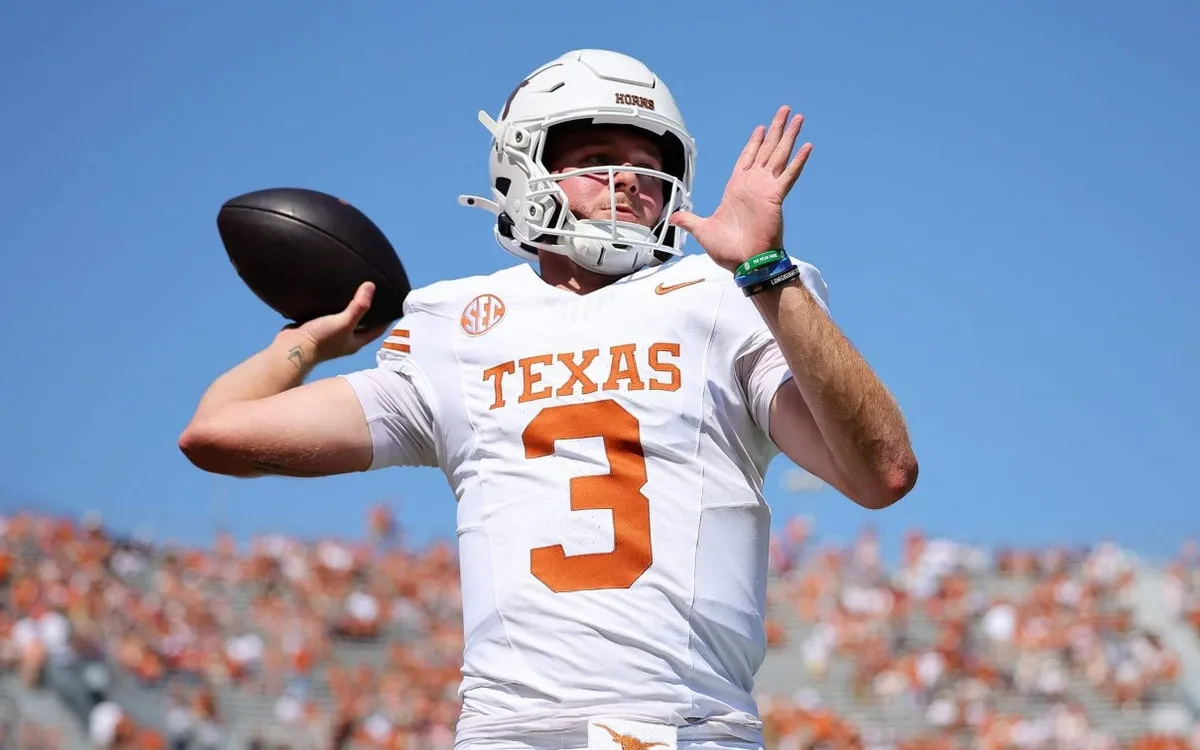
The NFL Draft consistently highlights the importance of quarterbacks, even when the available quarterback class lacks strength. This year, the focus was heavily on Shedeur Sanders, who faced a significant drop during the draft process. The football community buzzed for three consecutive days, debating why Sanders hadn’t yet been selected. On Friday night, while coaching my son’s youth football team, the topic of conversation was solely about Sanders and his surprising absence from the draft picks. It wasn't until Saturday afternoon that he was finally chosen at No. 144 by the Cleveland Browns in the fifth round.
Many analysts argue that if Sanders had been drafted in the second or third round, it wouldn’t have been considered a “fall.” However, being picked at No. 144 can certainly be described as a plummet for the Colorado star. An NFL offensive coordinator remarked on Sanders’ throwing motion, mentioning, “He has some leaks in his throwing motion, but I do like the kid. He’s smart and tough.” Despite acknowledging the challenges he faced, such as being sacked 94 times in the last two years due to a poor offensive line, the coordinator suggested that Sanders needed to develop quicker decision-making skills.
Another NFL offensive coordinator commented on Sanders’ lack of elite traits, stating, “He’s really developmental. He’s a good QB but not overly mobile.” The fact that he was drafted in the fifth round reflects a consensus that many teams viewed him as a backup quarterback, particularly when competing against established quarterbacks like Joe Flacco and Kenny Pickett.
Competing with Dillon Gabriel, the quarterback from Oregon who was drafted two rounds earlier by the Browns, adds another layer of challenge for Sanders. The dynamic of being a backup quarterback often hinges on the rapport with the starter, which may have influenced why many teams opted against selecting him earlier. Additionally, Sanders did not participate in the Senior Bowl or the NFL Scouting Combine, which typically raises red flags for teams unless a player is a first-round lock or has an injury excuse.
A former NFL quarterbacks coach weighed in, stating it was “not surprising” that Sanders waited until the fifth round to be drafted. “The intel I got was shocking: ‘This guy has no awareness about how he’s coming across,’” the coach noted. With the draft process behind him, it’s now up to Sanders to prove his doubters wrong, as he has done over the past two years in Boulder.
Among the first-round picks, one of my favorite selections was the Arizona Cardinals choosing Walter Nolen, a defensive tackle from Ole Miss. After a successful season with 14 tackles for loss, Nolen's talent was unquestionable. An NFL defensive line coach praised his athleticism but emphasized the need for Nolen to focus on studying the game. Concerns about his attitude were raised, but many believe he has the potential to thrive in the right environment, especially with veteran players like Calais Campbell and Dalvin Tomlinson around him.
On the other hand, my most skeptical pick was the New York Giants trading back into the first round for Jaxson Dart, the quarterback from Ole Miss. With a head coach under pressure and other pressing needs, it seems questionable to invest in a quarterback who may not see significant playing time this year. Dart's performance against weaker teams raises further doubts about his readiness for the NFL.
Another surprising decision was the Miami Dolphins selecting Quinn Ewers from Texas in the seventh round. Once the highest-ranked high school quarterback prospect, Ewers had a solid college career but failed to live up to expectations. His decision to enter the NFL Draft was met with skepticism, as many believed he would be better served returning to college to improve his draft stock.
The New England Patriots had a standout draft, acquiring players like TreVeyon Henderson, who is expected to excel as a third-down running back. Additionally, they picked Kyle Williams, a versatile wide receiver from Washington State, and Craig Woodson, a safety from Cal, showcasing their strategic approach to building a competitive team.
Meanwhile, the Tampa Bay Buccaneers loaded up on talented players, starting with first-round pick Emeka Egbuka. They also secured cornerback Benjamin Morrison and edge rusher Elijah Roberts, indicating a commitment to strengthening their roster with high-level college talent.
South Carolina safety Nick Emmanwori stood out as an exceptional athlete at the combine, yet he was drafted in the second round. His impressive physical attributes, such as a 4.38-second 40-yard dash and outstanding jumping abilities, suggest he could be a significant asset for any team. Coaches have mixed opinions about his coverage skills, but many believe he has the potential to be a game-changing safety in the NFL.
The Green Bay Packers made an intriguing choice by selecting Matthew Golden in the first round. His speed and ability to win one-on-one matchups should enhance their receiving corps. Additionally, late third-round pick Savion Williams from TCU has drawn comparisons to former standout players due to his unique skill set.
The NFL Draft continues to evolve, reflecting changing team needs and player capabilities. While some selections raise eyebrows, others showcase the potential for future stars. As teams move forward, the impact of these draft decisions will be closely monitored, especially for players like Shedeur Sanders, who now has the opportunity to reshape his narrative in professional football.